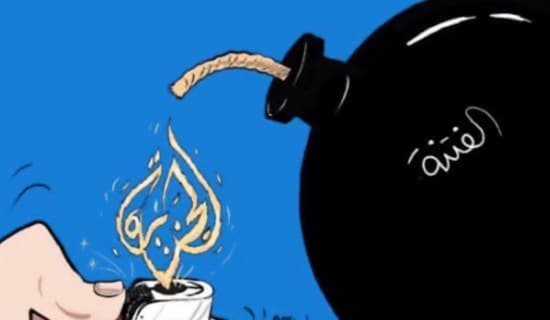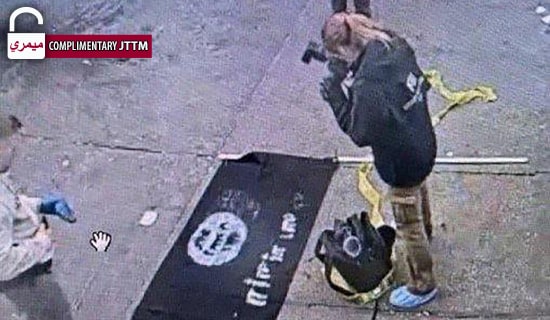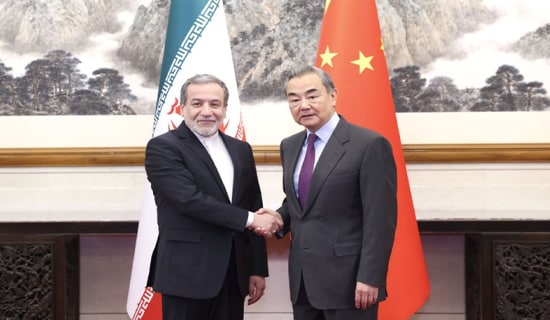In the past few days and weeks, the international media has reported on new and gruesome ways that the Islamic State (ISIS) has come up with for killing people, and on a series of audacious and brutal attacks - Kobane, Kuwait, Tunisia, France, Sinai - which portray the terrorist group as rampaging on the warpath. Anti-ISIS communicators, who wanted to talk about ISIS reverses at Tel Abyad and Baiji, are having to change the subject. And ISIS itself seems like a strange creature: part puffer fish and part shark. It must seek to move, to advance, to live, and it has perfected the skill of making itself look bigger, more substantial, and more menacing than it actually is.
But while attention was focused on those dramatic events - gruesome killing and shocking terrorist attacks - ISIS is sending other messages to its key audiences. An almost 18-minute Arabic-language video, released on June 30 by the prolific ISIS Al-Khayr (Deir ez-Zour) media office, shows a different side. Titled "And He Will Surely Give Them Safety After Their Fear" (taken from the Koran's Sura al-Nur, verse 55), the video opens with news reports of increasing crime in various Arab countries, including Morocco, Egypt, Jordan and Libya, and then presents a series of first-person testimonies by local men (all speaking in a strong local Syrian Bedouin accent, and some with herds of camels and sheep) convincingly relating in detail how the "Islamic State" has stopped robbery and thievery. "You couldn't move on this road without being robbed by either the (Assad) regime or the FSA" one says, "now people can move safely and don't even need to be armed. Anyone who says that ISIS robs or hurts innocent people doesn't know what they are talking about." People would give bribes at regime checkpoints and be allowed to pass, but "that doesn't happen anymore."

The video then shows the arrival of the Islamic State police, making their rounds in new-looking black (of course) Toyota Land Cruisers. As a new ISIS nasheed on "Our Sharia" plays in the background, another local man explains how he could not leave his womenfolk alone at home for long in the bad old days but that now there is safety. A boy in a clothing shop describes the nightmare of arbitrary theft, checkpoints, and violence that existed before ISIS rule. Bustling street life of people buying fruits and vegetables, a boy on a bicycle, even a pigtailed little girl on the back of a scooter, reinforce the message of safety and normalcy for all.

The video continues the theme of law and order, of how God's law punishes the evildoer, including with crucifixion, death and having hands chopped off. A young and enthusiastic speaker explains the reasons for these punishments. The announcement of such penalties, based on "the Book, Sunnah, and consensus," and preparations for execution are shown but the video includes no actual bloodletting. The sword is poised over the neck of the miscreant but we never see it fall. "Rule belongs to God alone," an ISIS speaker says, "not to America or Bashar [Al-Assad] or the Nusayris or anyone else."
Another Arabic language ISIS video, "And They Gave Alms," released on June 17 at the beginning of Ramadan by ISIS's main Al-Furqan media outlet, opened with its patented, high definition war footage (on the fall of Ramadi) but spent most of its almost 35 minutes exhorting and explaining almsgiving (Zakat) in painstaking detail. In addition to explaining how to tithe with gold, silver, grain, and livestock, the video showed the image of a state admonishing its citizens, making sure they paid their taxes, safeguarding that money, and making sure it was distributed to the truly needy. Probably no Western government - whose citizens don't like paying taxes - nor Middle Eastern one has been as solicitous in explaining why you should pay your taxes and what can happen - death as an apostate - if you don't.
Such videos are at least as frequent as those showing extreme violence. The "State" is actively promoting a discourse of "building," not just destroying; it is collecting taxes, providing security, administering justice, providing services and housing to its citizens and to foreign immigrants, in contrast to the anarchy, sectarian violence, and corruption characterizing much of Syria and Iraq in past years. It is even building new mosques (while blowing up older, supposedly compromised ones), although the one example to date is a truly hideous example of modern architecture.

The fact that ISIS pumps out such images on a daily basis to its own population and to a wider Arabic-language audience is a counter-messaging challenge of the first order. The building and the orderliness of the ISIS model is surely exaggerated, but all governments do that. There is a great phrase in Arabic - Haibat al-Dawlah - which means the awe and prestige of the State, something which authoritarian regimes in the region have sought to preserve at all costs. ISIS certainly is an imagined community, to use Benedict Anderson's famous construct, but it is also one that its leaders are seeking to implement with the fear and power - and the law and order - of a state, Haibat al-Dawlah, with tremendous, single-minded zeal.
The graphic portrayal of this seemingly orderly and rigorous State, which is explicitly modeled after the example of the Prophet Muhammad and the golden age of the Righteously Guided Caliphs (632 to 661 CE), has real power and attraction for millions, even for some who may have misgivings about the grotesque violence. Ignoring or minimizing ISIS's manipulation of deep historical roots in the early Islamic experience is tempting in our understandable zeal not to offend or alienate, but it ignores the wellspring that will give it lasting appeal as a model, even if it is one day destroyed as a viable entity.
*Alberto M. Fernandez is Vice-President of MEMRI.




